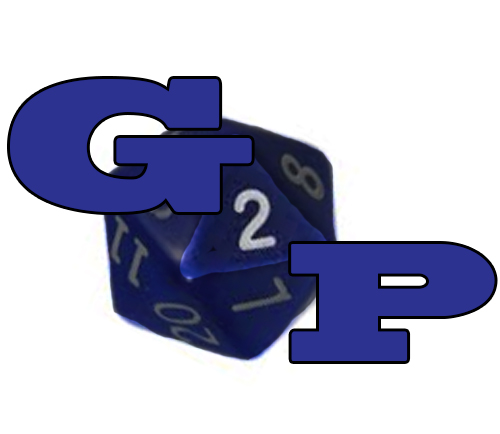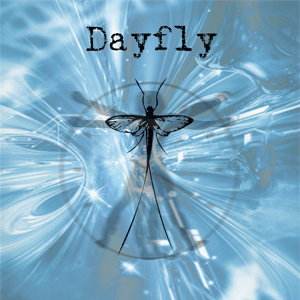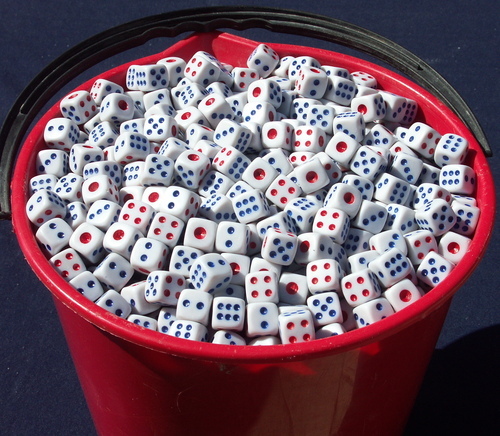
G2P (“Games 2 Play”) is a semi-regular editorial segment from GM Chris, and is devoted to showcasing the rare, the unusual, the crazy, the Indie, and (only very occasionally) the wildly popular in the tabletop RPG world. Games that you either didn’t know existed, games that you should try out as soon as you can, games that will make you laugh or hang your jaw in wonder at their amazeballs glory. In other words: games to play. This episode…

I found it surprisingly hard to write this article – though probably not for the reason you’d think. In my ongoing quest to showcase to the GamerNation the most amazing RPGs they’ve never heard of and need to get onto the table, I often find games that are… bluntly put… crap. No one writes about crap games, though. There are precisely zero successful gaming bloggers who garner a huge fanbase by telling you all about the games you should avoid. (And G2P certainly isn’t about that.) The conundrum for me are games that are “uncut diamonds,” meaning that once you play them, you quickly realize that they are tons of fun and that you want to play them again. They’re unique, wonderful, and worth telling others about. But surrounding that precious stone of glittering majesty is a big, crusty, dirty piece of coal. Sub-par writing. Amateur clip-art graphics. Layouts that were clearly made with a bargain word processor by a person with no design training. Usually, these things are the signs of a very amateur production house, and the keening death knell of such an RPG before anyone plays it. And maybe I’m a masochist – but when I get my hands on the grungy, black coal of the RPG world, I will doggedly crack open every piece I find. Because you never know – there MIGHT just be a diamond inside – and getting your hands dirty is worth it to me, as long as I can walk away with a gem.
Dayfly by Pinché Games is that gem. About a year ago, I found a single copy that was clearly home-printed and assembled, in a plastic bag (I kid you not), tagged and sitting face-up on a random shelf at one of my FLGSs. Dayfly was a slim RPG that I had never heard of… from a company I had never heard of… in a plastic bag. The tiny hairs on the back of my neck rose slightly, and I furtively glanced around and tucked it under my arm, heading to the register. Later, ripping open the bag, I read all 22 pages of Dayfly.
It’s pitch was intriguing: “No Skills. No Stats. Just One Day. How Long Will Your Light Burn?” Interest… piqued.
It’s hook was devastatingly good: “In this world there are those engineered to live their entire lives in the span of one day. They waken to accomplish one goal, then retire forever. They are the Dayflies. They are sleeper agents, planted for a single purpose; with so little time, they never realize what they are, they never know that today is their only day. their single-mindedness keeps them on mission, drowns out everything else, allows them no time to consider, no time to think, no time to tell. Today you are a Dayfly. What will be asked of you in your 24 hours?” Mic… dropped. I’m all in, baby.
Then… sadly… my enthusiasm was tarnished by the aforementioned poor design, layout, and writing. It hurt. It hurt bad. Sigh. Still – I kept reading. The game was clearly a labor of love from some Indie Designers, and there’s no faster way to my heart. And ultimately – I’m glad I didn’t give up on it. And I’m even more glad I got it on the table. Because through the messy and crusty grits of charcoal was a shining, albeit rough, diamond.

At it’s core, Dayfly is a simple narrative RPG with no stats, no classes, no hit points – just lots and lots of dice. Oh yeah, and you only live for one single day. Maybe less. Characters do have a single ability, which I’ll come to, but the crux of the game focuses on managing a dice pool that can be used to enhance your rolls, but also measures the hours of your one day – your one life. You can spend your “life energy” to succeed wildly, but at the cost of burning out all too soon. It really is a brilliant concept.
Characters are clones in some dystopian future, or engineered soldiers/agents in a cyberpunk alternate world, or perhaps magically resurrected warriors brought forth to fight a great evil in a long-forgotten mythical fantasy past. Though the games’ examples and stories run with the “cloned agents” narrative, the writing team of Brian Bird and Colleen Guzman make it clear that Dayfly can take place in any setting. The only constraint is that your characters live for no more than a single day. As you can imagine, this makes it a marvelous game for a one-shot adventure.
 Dayfly is not your typical RPG, but it still utilizes the tried-and-true d6. LOTS of d6s. Every single PC needs twelve of them; four of one color (your “Livelihood Pool”) and 8 of another color (your “Forfeiture Pool”). A player’s Livelihood Pool represents her basic ability to get the job done, and is used when a player wants to accomplish tasks. Their Forfeiture Pool represents the short hours of the Dayfly’s life, and can be used whenever the character wishes to call upon her inner reserves to boost a roll she’s making. It might eat away at her precious time – but as a Dayfly, she can call upon that inner reserve of strength to accomplish great things. When the risks of a situation are too high, the Dayfly PC can choose to risk her remaining hours of life by adding Forfeiture Dice to her Livelihood Pool for a roll. But if she completes the task, then she loses those Forfeiture dice. Forfeiture dice are also removed when a Dayfly PC suffers damage, so they really do represent your innate life force. When a player has lost all of the Forfeiture Dice in her pool, then she is out of time – even if her 24 hours are not up or her mission is not yet complete. She burned bright, but burned out all too quickly.
Dayfly is not your typical RPG, but it still utilizes the tried-and-true d6. LOTS of d6s. Every single PC needs twelve of them; four of one color (your “Livelihood Pool”) and 8 of another color (your “Forfeiture Pool”). A player’s Livelihood Pool represents her basic ability to get the job done, and is used when a player wants to accomplish tasks. Their Forfeiture Pool represents the short hours of the Dayfly’s life, and can be used whenever the character wishes to call upon her inner reserves to boost a roll she’s making. It might eat away at her precious time – but as a Dayfly, she can call upon that inner reserve of strength to accomplish great things. When the risks of a situation are too high, the Dayfly PC can choose to risk her remaining hours of life by adding Forfeiture Dice to her Livelihood Pool for a roll. But if she completes the task, then she loses those Forfeiture dice. Forfeiture dice are also removed when a Dayfly PC suffers damage, so they really do represent your innate life force. When a player has lost all of the Forfeiture Dice in her pool, then she is out of time – even if her 24 hours are not up or her mission is not yet complete. She burned bright, but burned out all too quickly.
Then, the GM – or “storyteller” – also needs dice. Specifically, 4d6 for every NPC in his session. Yes, you read that right – 4d6 for every NON Player Character in the game session. This creates the storyteller’s “Story Pool,” representing the strength of all the NPC threats in this game; perhaps their roles of power in the universe, supernatural forces, really anything that bars the Dayflies’ progress in their struggle to complete their mission. The storyteller uses these dice whenever the players tackle a threatening foe or challenge; and every time an enemy or difficult task is defeated, dice are removed from the storyteller’s Story Pool, bringing the players one step closer to completing their mission. When the Story Pool is empty, the Dayflies have completed their mission, and are victorious.
Rolling is a simple affair, with an unusual resolution mechanic: they are attempting to roll “chains” – basically, “runs” of dice in numerical order – such as “1,2,3” or “3,4,5,6”. Each foe they are fighting against or task they are attempting has an inherent storyteller-determined base difficulty, and this is the number of dice in a chain the PC must roll to be successful. Combat, for example, is usually a difficulty of 4 – so a Dayfly would need to roll a 1,2,3,4 or 2,3,4,5 or 3,4,5,6 to be victorious. Base difficulty can also be adjusted via player/storyteller narration. The fight with the evil guardsman might have a base difficulty of 4; but the plucky Dayfly hero has a magic sword, reducing the difficulty to 3; and his foe is blinded by clever antics, reducing the difficulty to 2. It should be fairly easy to make a chain of 2 dice. Conversely, breaking into the cloning factory of The Organization might have a base difficulty of 3, but active spotlights searching for the heroes and their bumbling attempts tripping a security alarm earlier might increase the difficulty to 5! It’s even possible to have difficulties of 6 or more, if the situation warrants (and the book does give some excellent examples of how a storyteller determines base difficulty, then modifies it based on the situation). You can see why a player might be eager to grab some of her Forfeiture Dice for the roll!
As Dayflies, the PC characters don’t have stats, just their two pools of dice and ONE special ability, based on their chosen (or determined) role within the group. These special abilities all modify the way in which players can make chains, and allow players to do “weird things” with their dice. For example, the “Circle” ability (granted to Scientists, Mentalists, or Healers) allows that player to make a chain by linking 1 to 6 on the dice. So a Difficulty 3 chain could be completed with a roll of 5,6,1 or 6,1,2. Other abilities let players reroll a die, flip dice, make chains from odd/even sets, and much more. But these abilities are really the ONLY “stat” a Dayfly PC has.
Dayfly is a highly narrative game that can be thrown down at a moment’s notice. Players can make characters in literally a few seconds, and play typically lasts a few hours. The only downside to Dayfly is the aforementioned production value and decisive lack of GMing information. Much is incumbent on the GM to “figure out” – but not for lack of trying. A full 7 pages is devoted to a “sample adventure” that was clearly designed to show the GM what to do, but reads more like a scattered outline with no “here’s an example of play” features. Despite this, though, it takes a pretty thick GM to not figure this out.
So why am I recommending Dayfly to you? It’s unusual with a unique resolution mechanic. It has a killer hook that can accommodate hordes of great adventures. It’s fast and easy to understand. And perhaps most importantly – it’s fun and you’ve likely never played anything like it. It does, I think, take more work on the part of the GM to understand the game than it should (sadly, this could easily have been remedied with better writing, examples, and layout). But I’m really splitting hairs at this point. Any GM can figure this out in a 10 minute read. The crusty coal around this gem of a game is that it could have been understood with a 2 minute read. I’ll go so far as to wistfully declare that this title could have been published by a more experienced team as a 1 or 2 page pocket RPG, becoming as “convention-legendary” as Lasers and Feelings.
But still – it’s worth checking out, for the novelty alone. And if you decide to throw Dayfly down on the table, I guarantee you’ll have as much fun as I did. It’s unique concept, simple mechanics, and one-shot-glory harken to a simpler time of RPGs, where the enthusiasm of unique concept and a love of play shine through. So pick it up. It’s on sale for a measly $3, right now at DriveThruRPG. And it’s definitely $3 worth of fun.
Peace, Love, and Good Gaming – GMC
(All names, references, and pictures presented in this article are Copyright 2014 Pinché Games, all rights reserved by their respective owners. This article is a media work of review and publicity, and is in no way intended to share intellectual property or copyrighted material outside the scope of media review.)
